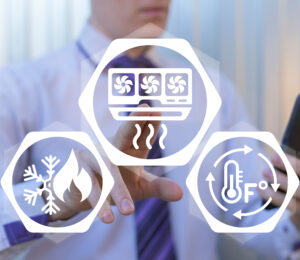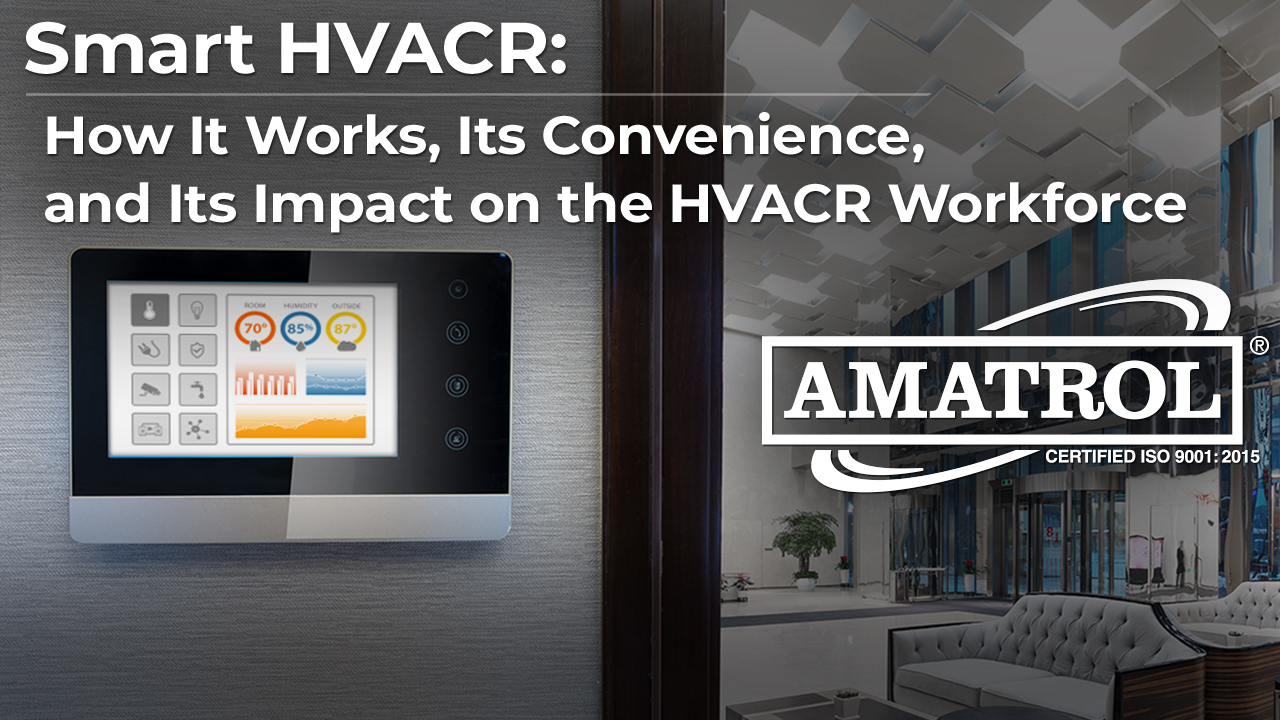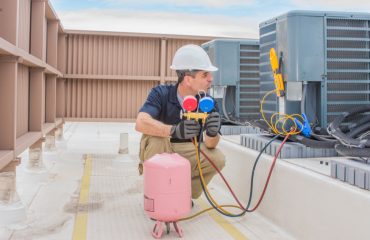In today’s world, more and more technology is becoming “smart.” But how does this apply to the HVACR industry?
What is Smart HVACR?
Smart HVACR is the successor to the programmable thermostat era of heating, cooling, air conditioning, and refrigeration systems. A smart HVACR system uses sensors and interconnected devices to collect data from the environment in which it is installed. By analyzing this data, the system decides when and how much the temperature and other atmospheric elements need to change and activates itself accordingly. It can be accessed remotely and allows for more acute control of a building’s environment through zoning and preventative maintenance alerts.
How Does Smart HVACR Technology Work?
We are all familiar with motion sensors that tell automatic doors to open or a public restroom faucet to turn on. Several types of sensors like this play a huge role in smart HVACR systems. Their use is a bit more complex, however, because each sensor is connected to a large network of devices called the Internet of Things, or IoT. According to an article by Oracle, the Internet of Things can most simply be defined as “the network of physical objects—’things’—that are embedded with sensors, software, and other technologies for the purpose of connecting and exchanging data with other devices and systems over the internet.”
Smart HVACR systems are made possible because of the IoT. Sensors that monitor temperature, pressure, humidity, carbon dioxide, occupancy, light, and more collect data and relay it to analysis software. Using algorithms, the software can determine what a building needs to ensure a comfortable environment for its occupants. It also creates its own performance reports, which allows the system to issue preventative maintenance alerts to the user when performance is decreasing. By having the system calculate this for itself, it also makes it more efficient because it lessens the need for human interaction, thus reducing human error or delay in programming thermostats and addressing repairs.
Who Uses Smart HVACR?
Smart HVACR technology is used in both large and small scale. In the industrial sector, businesses can install complex smart HVACR systems that allow for control over separate sections, or zones, in a building. If desired, even individual rooms, such as private offices or conference rooms, can be their own zone. This prevents overuse of energy by prioritizing or deprioritizing zones based on size and occupancy level. For example, a company that houses both their private office space and production floor in the same building would not want all areas heated or cooled equally because the spaces are not comparable and the movement of employees in each area fluctuates differently throughout the day.

In the residential sector, however, smart HVACR systems are typically much less complex due to the cost of implementation and size of an average family home. Homeowners will likely not wish to control each room individually and will opt for a single smart thermostat so that HVACR controls can be accessed through a smart phone or tablet. Some smart thermostats include the additional feature of geofencing, which involves the thermostat tracking a homeowner’s location through their smart phone and adjusting the temperature to save energy while the user is away from home.
Why is This the Future of HVACR Technology?
Overall, smart HVACR is growing in popularity and will eventually be the new norm in new and upgraded constructions. However, many may say that programmable thermostats have worked fine for decades and wonder why this particular technology needs to be updated.
At its core, every human advancement, or invention, has come from the need to solve a problem. In our world today, the internet and smart phones have made us accustomed to immediacy and convenience, which has led to us continually seeking to save time and energy. This is often achieved by using technology to make our routine or tedious tasks less time-consuming. By implementing smart HVACR systems, we no longer need to adjust our thermostats every day or estimate our cost and energy savings ourselves. Rather, the smart HVACR system can do the legwork for us, and we can strategize our savings based on hard data patterns that we may not have discovered without the analytical software.
As a whole, we are also more concerned about climate change than ever before. Switching to a smart HVACR system saves more energy than a programmable thermostat by removing the need for much human interaction. The system can accurately determine when to turn on or off without us constantly monitoring it, which means that every building that is equipped with a smart HVACR system can reduce its impact on the environment.
How Can the Current and Future HVACR Workforce Best Prepare for This Technology?
With more complex technology also comes the need for more advanced skills in workers. Smart HVACR systems require a larger skillset to install, program, maintain, and repair them than programmable or manual thermostats do. As we transition further into this next era of HVACR technology, HVACR technicians will be expected to know much more than the basics, like how the systems are built physically. Soon, it will be the standard for HVACR technicians to be proficient in the digital skills that make these systems smart.
For this reason, both current and future HVACR technicians must be willing to grow their skillset to encompass these new areas of smart technology. Training programs with up-to-date courses and equipment are an excellent way to develop these new skills. Additionally, earning industrial standard certifications can help potential employers identify qualified candidates for smart HVACR roles.
With the proper training, HVACR technicians can look forward to a bright future in the industry as smart technology continues to transform how we spend our time, energy, and money.





